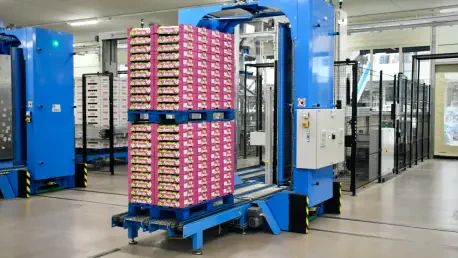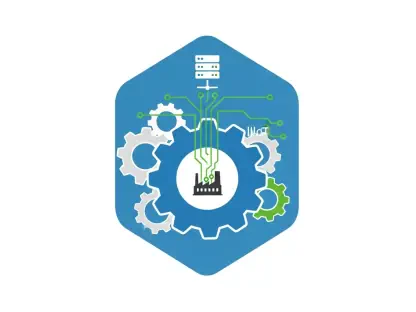In today’s rapidly evolving food industry, scaling operations efficiently without compromising quality is crucial. As businesses grow, the challenge of managing recipes intensifies. A robust and scalable recipe management system is no longer a luxury but a necessity for ensuring consistent product quality and streamlined operations. This guide provides a comprehensive approach to assessing and enhancing your current system, equipping you with practical steps to make it ready for scale-up.
Understanding the Importance of Scalable Recipe Management Systems
Recipe management plays a pivotal role in the growth trajectory of any food manufacturing business. As companies expand, the complexity of operations increases, making efficient recipe management essential to handle larger volumes and diverse product lines. A scalable system ensures that recipes can be seamlessly adjusted and replicated across different scales without losing accuracy or encountering bottlenecks.
Food manufacturers often face distinctive challenges, such as maintaining consistency, managing regulatory requirements, and juggling increased production loads. Evaluating existing recipe management systems requires a careful examination of their adaptability, efficiency, and ability to integrate with other business operations. Key factors to consider include the system’s scalability, responsiveness to change, and capability in facilitating easy updates across the board.
The Evolution of Recipe Management in the Food Industry
The progression of recipe management tools reflects technological advancements and the changing needs of the industry. Early methods relied heavily on manual documentation, leading to inefficiencies and errors. However, contemporary systems are automated and digital, significantly enhancing accuracy and efficiency. This evolution has allowed businesses to respond swiftly to consumer demands and regulatory changes.
Current industry trends emphasize the necessity for scalable solutions as brand portfolios and international presence grow. Technology, including cloud-based and AI-driven platforms, has a profound impact, offering unprecedented levels of automation and integration. These advancements enable a more dynamic form of recipe management, aligning product offerings with market trends while maintaining quality standards.
Essential Steps to Ensure Your System is Ready for Scaling
Step 1: Evaluating Current System Capabilities
Begin by conducting an in-depth assessment of your existing system to identify its strengths and weaknesses. This involves analyzing the features that support scalability, such as multi-level recipe adjustments and real-time data processing capabilities. Identifying bottlenecks will help prioritize areas needing improvement.
Insight: Tailoring Tools to Business Size
Selecting software solutions that are adaptable to your business’s unique size and growth stage is crucial. Opt for systems offering modular configurations, enabling businesses to start small and scale efficiently as needs evolve.
Step 2: Integrating Inventory and Production Processes
Integration between inventory and recipe management is fundamental for operational efficiency. Synchronizing inventory with recipe requirements ensures that stock levels are maintained accurately, reducing waste and shortages. Real-time updates provide insights into ingredient availability, guiding purchasing decisions.
Tip: Leveraging Technology for Seamless Integration
Adopting integrated systems like Enterprise Resource Planning (ERP) software can streamline processes. These platforms consolidate inventory and production management, offering centralized control and reducing discrepancies.
Step 3: Standardization and Consistency in Recipes
Standardization is vital for maintaining quality and compliance as you scale. Establish clear procedures for developing and documenting recipes to ensure consistency across all production levels and locations. Regular audits and training support this effort, improving overall efficiency.
Warning: Risks of Inconsistencies
Ignoring recipe standardization can lead to quality variations and potential non-compliance with regulations. Inconsistencies can erode customer trust and lead to resource wastage, ultimately impacting profitability.
Step 4: Enabling Flexible Product Variations
Flexibility in managing product variations allows businesses to quickly adapt to market demands. Implement configurable recipes that accommodate variable ingredients and processes, reducing the need for developing entirely new recipes for each variation.
Insight: Adapting to Market Demands
Aligning product lines with consumer trends is critical to competitive success. Monitor consumer preferences closely to adjust recipes promptly, catering to emerging dietary or flavor trends.
Step 5: Implementing Effective Version Control
Effective version control is necessary to track and manage changes across recipes. Documenting updates systematically facilitates traceability and ensures compliance, especially when adapting to new regulations or making product improvements.
Tip: Ensuring Compliance and Traceability
Leverage version control tools that allow for detailed tracking of modifications. This enables thorough audits and assures quality control, critical for maintaining product integrity across all batches.
Recap of Key Strategies for Scalability
- Conduct a comprehensive evaluation of current system capabilities.
- Integrate inventory with recipe management for synchronized operations.
- Standardize recipe processes for consistency.
- Enable flexibility for handling product variations efficiently.
- Implement robust version control for tracing and compliance.
Future Outlook and Industry Implications
Moving forward, emerging trends such as personalized nutrition and sustainability will shape the recipe management landscape. Companies embracing these changes successfully may serve as case studies illustrating effective scaling. However, they must remain vigilant about challenges such as data security and technology updates.
Successful scaling in the food industry hinges on the adoption of innovative practices that address market demands proactively. As technology continues to advance, businesses should leverage these tools to enhance efficiency and sustain competitive advantage.
Conclusion: Taking Action Toward Scalable Recipe Management
By assessing and enhancing systems for scalability, businesses position themselves advantageously in a competitive market. A scalable recipe management approach not only ensures operational efficiency but also enhances responsiveness to market changes. Embracing technological solutions for scalability equips companies to grow sustainably and effectively navigate the complex demands of the future food industry.









